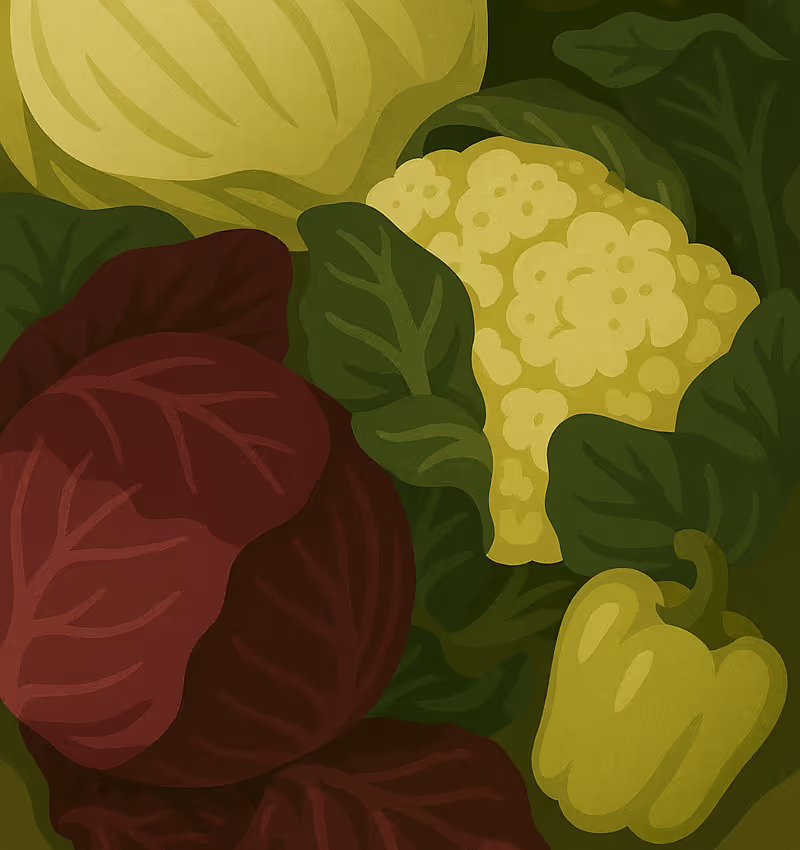Lesson 1
Impact Potential
For the Vegetable Exhibition to have a lasting effect it ideally should not be a standalone event, but rather a catalyst for ongoing engagement and learning. Building momentum requires embedding the exhibition within a broader strategy that fosters continued participation, discussion, and action.
1. Personal Level
- Raising Awareness of Agrobiodiversity – Engaging with a variety of vegetables, especially lesser-known or heritage varieties, may encourage visitors to reflect on the diversity of food systems and their own consumption habits.
- Influence on Eating and Purchasing Habits – Tasting unfamiliar vegetables or learning about their origins and cultivation methods can help encourage visitors to incorporate more diverse and locally grown produce into their diets.
- Greater Appreciation for Biodiverse Growing or Agriculture – Understanding the connection between farming practices and biodiversity may shift perspectives on the environmental impact of food choices.
- Sensory and Experiential Engagement – Tasting, smelling, and handling different vegetables can create a deeper, embodied understanding of agrobiodiversity, making the learning experience more memorable.
2. Interpersonal and Community Impacts
- Knowledge Exchange Among Growers – The exhibition provides a space for farmers, gardeners, and food producers to connect, share best practices, and exchange insights about cultivation techniques, seed saving, and sustainable farming.
- Strengthening Local Food Networks – Visitors may be inspired to support local producers, join community-supported agriculture (CSA) schemes, or engage in urban gardening initiatives.
- Bridging Different Communities – The exhibition could bring together farmers, chefs, researchers, and consumers, fostering discussions on the importance of diverse food systems and local food sovereignty.
- Shared Cultural and Culinary Practices – If the exhibition includes discussions or demonstrations on traditional cooking methods, it may encourage the preservation and celebration of cooking practices.
3. Institutional and Organisational Impacts
- Community Group Collaboration – The event may serve as a platform for environmental NGOs, local food advocacy groups, and policymakers to engage with the public, strengthening partnerships between different sectors.
- Educational Outreach Opportunities – Schools, universities, libraries and research institutions could integrate elements of the exhibition into their sustainability or agricultural education programmes.
- Cultural Shifts in Food Narratives – Showcasing diverse vegetables and their histories may challenge dominant food system narratives that prioritise uniformity and mass production, and, instead, encourage biodiversity-friendly practices.
- Post-Event Follow-Ups: Consider creating an accompanying digital space, such as a WhatsApp group, email newsletter, or online forum, allowing attendees to continue discussions, share experiences, and exchange seeds or recipes.
- Field Visits and Grower Exchanges: Organising follow-up meet-ups or farm visits to see how growers are implementing biodiversity-friendly practices, can keep the momentum going.
- Encouraging Local Action: Partnering with schools, community gardens, or farmers’ markets to integrate agrobiodiversity themes into their activities can further spread the message.
- Strengthening policy impact and legitimacy: Exhibitions can create visible evidence of community engagement that strengthens the legitimacy of policy decisions. When insights from exhibitions are integrated into strategies or procurement frameworks, they demonstrate that policies are grounded in lived realities, which helps sustain momentum and public support over time.
In this video Borbála Lipka reflects on how the Vegetable Exhibition created a space to discuss the impact of climate change upon agrobiodiversity:
Lesson 2
Measuring and Showcasing Impact
1. Collecting Feedback and Measuring Impact
- Pre- and Post-Event Surveys – Gather insights on attendees' knowledge, attitudes, and behaviours before and after the exhibition. Questions can focus on food choices, awareness of agrobiodiversity, or interest in sustainable food practices. Create a QR code with access to the survey.
- Feedback Stations – Set up a 'Tell Us What You Think' wall, where visitors can write quick reflections, thoughts, or commitments related to food and biodiversity, or have a visitors’ book.
- Monitoring Engagement on Social Media – Assess the reach of event-related posts, hashtags, and discussions to understand how far the message has spread.
2. Showcasing Impact and Success Stories
- Sharing Success Stories – Publish testimonials, interviews, or short case studies on a website, blog, or social media, highlighting how the exhibition influenced individuals and communities.
- Community-Led Storytelling – Invite visitors, growers, or chefs to share their experiences through blogs, short video clips, or artwork inspired by the event.
- Scaling Up the Event – If successful, consider making it an annual event, or replicating it in other communities.
- Building an Ongoing Network – Create a community platform or mailing list to keep attendees engaged, share resources, and inform them about future events.





















